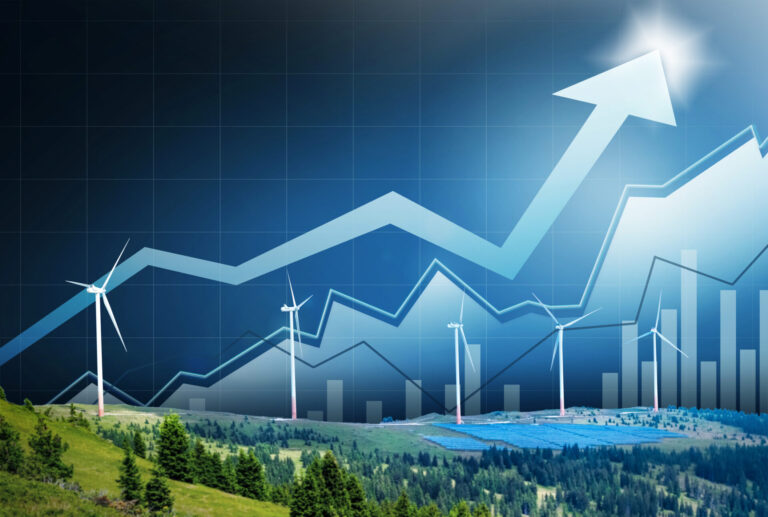Sunday, July 6, 2025
By Elliott Cappell
There has been much skepticism and debate arising from the flurry of net zero targets announced by global corporate and public leaders in the days around Earth Day 2021.
It was, arguably, the coming out party for net zero, as global attention focused on the plans initiated to bring us to net zero in many facets of our international landscape in the decades ahead. But at the same time, it was an opportunity to criticize, suggesting the targets set don’t go far enough.
The most important criticism of net zero of late comes from three climate scientists— James Dyke, Robert Watson, and Wolfgang Knorr—who published an article on Earth Day claiming the “concept of net zero is a dangerous trap.”
Their argument holds some merit and leaves me wondering if we need to start thinking about a new concept: Absolute Zero.
Reducing Corporate Emissions
It’s important to start with a clear definition of what exactly net zero is. From the United Nations: “Put simply, net zero means we are not adding new emissions to the atmosphere. Emissions will continue, but will be balanced by absorbing an equivalent amount from the atmosphere.” The goal is to reach net zero by 2050, which means that any remaining greenhouse gas emissions must be absorbed using green solutions, carbon capture, or ways of removing carbon that we have yet to invent.
Corporate emissions targets are a vital component of meeting national and global demands for net zero, as well as the emissions reduction targets set out in the Paris Agreement. Without these global corporations buying in to climate change impacts and taking the necessary steps to reduce their emissions, we simply cannot expect to meet our goals.
The decarbonization jackpot is when companies set both a science-based target (SBT) and a net zero target. In simple terms, that means eliminating approximately 90 per cent of emissions and removing the remaining 10 per cent. If the entire corporate sector met that ambition, we would curb global warming very significantly. Later this year, a global standard for science-based target for net zero will be finalized (SBTi has published a guidance note already).
Bright Green Lies
The problem which Dyke, Watson, and Knorr raise is with the “the ~10%” part. To make a long story short, they argue that if you add up our approximate 10 per cent, (I will call that ∑10), the scale of removals required is unachievable. For example, they cite evidence that between 25 per cent and 80 per cent of the world’s arable land would be required for the biofuels required to provide the energy for ∑10.
The Dyke, Watson, and Knorr argument is part of a larger narrative linked to the “Bright Green Lies” movement. Bright Green Lies, first a book and now a movie, casts skepticism on nearly all the technology we use to fight climate change. This movement claims the only path to net zero is by ceasing our use of fossil fuels entirely and focusing exclusively on natural solutions. Their prescription demands a sudden and massive change in how we move, eat, power, clean, communicate, and so on.
Bill Gates’s narrative, articulated in his book How to Avoid a Climate Disaster, is the counter argument. Gates claims that breakthroughs and innovation in clean technology will change the math, allowing us to balance decarbonization with continuing to live our normal lives.
Absolute Zero
What does all this mean, practically for company and investors?
First, the Dyke, Watson, and Knorr argument has merit, and so we need to start thinking about how to get that approximate 10 per cent to zero, or an Absolute Zero. We need to start the conversation on what “Absolute Zero” would look like, and what standards we would need to set for that future.
Second, despite the first point, it would be a huge mistake to underestimate the importance of net zero and SBT claims by business or investors. Fundamentally, SBTs are a material step towards decarbonization. The SBT-Net Zero standard should and will be the north star for corporate decarbonization when it comes out later this year.
Third, we need to take a hard look at what we are using to remove that ∑10. Already many people are working on the highly profitable promise of making carbon capture both affordable and scalable, such as Shopify and Carbon Engineering.
A big gap exists on the nature-based solutions component of ∑10. Land use is an overlooked story in climate change, which is getting some spotlight because of the pandemic; it is that same deforestation that links zoonotic diseases like COVID to humans. It takes a long time to grow a tree—decades, in fact—and so far as I know, not a lot can be done to speed that up to years or months. Nature-based solutions, land use, and biodiversity are key priorities for climate action in the years ahead, and why the theme of Earth Day 2021 was “Restore our Earth”.
The Dyke, Watson, and Knorr argument should not be dismissed. We need to think about not just the scalability of carbon capture, but also the limits of its scale.
In the months ahead leading up to COP26 (Conference of the Parties that signed the United Nations Framework Convention on Climate Change), I see at least three major priorities for businesses and investors on this topic:
- Setting science-based net zero targets;
- Starting the conversation on what “Absolute Zero” would look like; and
- Investing in nature-based solutions and developing a more rigorous set of rules and standards around them.
What do you think? What did I miss? Do Dyke, Watson, and Knorr have it wrong? Do you side with Bill Gates or with the Bright Green Lies movement?
Send me an email at elliott.cappell@wsp.com and let me know what you think.
Elliott Cappell is the director of climate change, resilience, and sustainability for WSP in Canada and the former chief resilience officer for the City of Toronto.
Need help navigating the complex net zero landscape? Want to build a real plan for reaching your emissions targets? Check out our net zero homepage to learn more about how we can help.

Featured image and gif from WSP.











